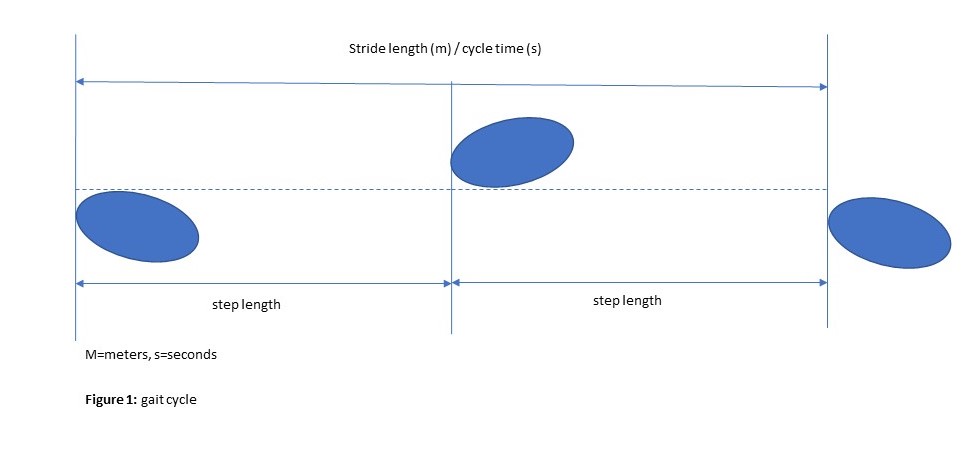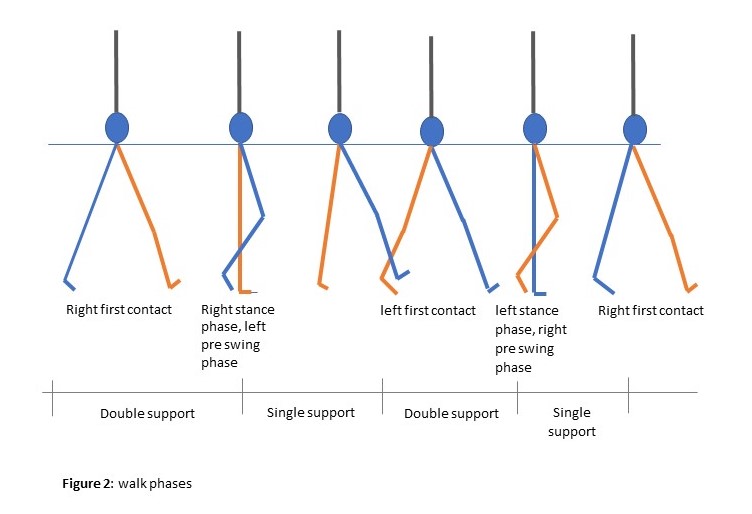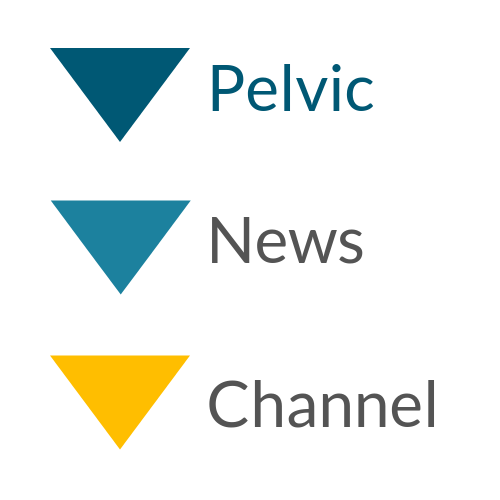Part of the assessment of pregnant women with pelvic girdle pain is the ‘gait analysis’. Today’s research provides us, in my opinion, with a good view on gait in pregnancy.
Why did they do this study?
This research was performed in order to add to our knowledge of gait in the 2nd trimester of pregnancy. (Besides gait also trunk, pelvic, and hip kinematics were researched, which I will not discuss in this blog).
How was the research executed?
Three groups were compared; 1. pregnant women with pelvic girdle pain (n=25), 2. pregnant (a-symptomatic) women without pelvic girdle pain (n=24) and 3. non-pregnant women (n=24).
Inclusion criteria
Pregnant women:
- No-risk pregnancy
- < 27 weeks of gestation
Pelvic girdle pain group:
- Posterior pelvic pain between christa iliaca and gluteal folds
- Onset in current pregnancy
- Positive posterior pelvic pain provocation test (P4)
- Active straight leg raising test (ASLR) > 0
Measurement
Pelvic girdle pain group:
- Pelvic girdle pain questionnaire (PGQ)
- Numeric rating scale for pain intensity (NRS)
- Fear of movement (Tampa scale, 1 question)
- (most) painful side = test side. In case pain is equal on both sides test side was randomly selected by a coin toss)
All groups:
- Biomechanical testing (markers on specifical anatomical landmarks)
- Pregnant and non-pregnant women without pelvic girdle pain. Test side selected by a coin toss.
Testing was executed barefoot at the women’s own speed. They did four repeated gait trials. The resuls were also adjusted for speed. The correlation between mean gait speed and 1. fear avoidance, 2. PGQ score, and 3. pain intensity (NRS) was calculated.
What are the results?
Pelvic width: no difference between pregnant women with or without pelvic girdle pain
Pelvic girdle pain group:
- PGQ varied between 10-73%, pain intensity 0-7, fear of movement 1-10 and ASLR sum score 1-8 (32% of women ASLR >4).
- Mean gait speed correlated negatively with fear of movement (speed lower, fear of movement higher) and disability measured with PGQ and there was no significant correlation with pain intensity.
Pregnant women with pelvic girdle pain compared to
asymptomatic pregnant women have:
Figure 1: explanation of gait parameters
- 18% slower gait speed, longer cycle time (9%)
- Longer stance time (12%)
- Shorter step length (ipsilateral 9%, contralateral 11% – 10% shorter stride )
- Longer double limb support (10%) (bodyweight is supported by two legs, for instance toes left foot and heel right foot)
- (Less pelvic and hip movement)
- (Greater side to side movement of the trunk)

When adjusted for speed:
- Shorter contralateral step length and double limb support remained significantly different. A woman with pelvic girdle pain has a shorter stance phase on painful side.
Between asymptomatic pregnant and non-pregnant women
Figure 2: gait cycle
- Stance time (s), stance phase (%of gait cycle) and double limb support significantly different.
- Less forward rotation of ipsilateral thorax in pregnant women.

Clinical implications for the (pelvic) physiotherapist?
The authors hypothesize that the effect of the longer double support when walking reduces load transfer because the single stance time is shorter. This results in the shorter contralateral (on the least painful side) step length is shorter. This might mean that weight bearing on the painful side is weakened. Speed between asymptomatic pregnant and non-pregnant women differed not significantly. However, stance time and double limb support in asymptomatic pregnant women was significantly increased compared to non-pregnant women.
Biopsychosocial factors might influence gait as women with pelvic girdle pain were more afraid to move and had a higher PGQ score. Pain intensity played no part.
In this research women with ASLR>0 were included in the pelvic girdle pain group. I am curious to see whether there are differences between pregnant women with ASLR <4 and those with an ASLR ≥4.
In the next blog I will discuss research on the kinematics of the ‘stork test’ in pregnant women.
These blogs might also interest you:
Christensen L, Veierød MB, Vøllestad NK, Jakobsen VE, Stuge B, Cabri J, Robinson HS.Kinematic and spatiotemporal gait characteristics in pregnant women with pelvic girdle pain, asymptomatic pregnant and non-pregnant women. Clin Biomech (Bristol, Avon). 2019 Aug;68:45-52. doi: 10.1016/j.clinbiomech.2019.05.030. Epub 2019 May 23. (open access)









Recent Comments